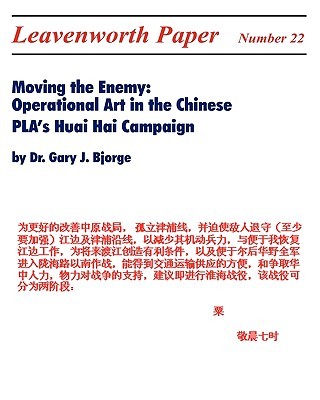
- We will send in 10–14 business days.
- Author: Gary J Bjorge
- Publisher: www.MilitaryBookshop.co.uk
- Year: 2010
- Pages: 318
- ISBN-10: 1907521216
- ISBN-13: 9781907521218
- Format: 20.3 x 25.4 x 1.7 cm, minkšti viršeliai
- Language: English
- SAVE -10% with code: EXTRA
Reviews
Description
This study examines the Huai Hai Campaign as an example of operational-level warfare as described in the 2001 version of U.S. Army Field Manual 3-0, Operations. It also examines the campaign from the perspective of the military thought contained in the ancient Chinese military classic, The Art of War, and the Communist operational doctrine in effect at the time of the campaign. What emerges is a picture of what operational art can contribute to warfare. Communist commanders consistently maintained an awareness of the war situation as a whole and continually ensured that the objectives of their military operations were linked to strategic goals. The study shows that Su Yu, the acting commander of the East China Field Army, was an excellent practitioner of operational art and a general who was willing to speak out against military operations that would not contribute to achieving political, social, or economic goals. The study contains background material on the Communist mili-tary forces that fought the campaign and the commanders who led them in the field. Using messages sent between various Communist headquarters, the study describes and analyzes the operational decisions that were made. Much of this material has not appeared before in English. This enables readers to gain a fresh appreciation for the professional competence of military men who were among the founding generation of the People's Liberation Army and later played significant roles in building the military strength of the People's Republic of China.
EXTRA 10 % discount with code: EXTRA
The promotion ends in 22d.06:44:32
The discount code is valid when purchasing from 10 €. Discounts do not stack.
- Author: Gary J Bjorge
- Publisher: www.MilitaryBookshop.co.uk
- Year: 2010
- Pages: 318
- ISBN-10: 1907521216
- ISBN-13: 9781907521218
- Format: 20.3 x 25.4 x 1.7 cm, minkšti viršeliai
- Language: English English
This study examines the Huai Hai Campaign as an example of operational-level warfare as described in the 2001 version of U.S. Army Field Manual 3-0, Operations. It also examines the campaign from the perspective of the military thought contained in the ancient Chinese military classic, The Art of War, and the Communist operational doctrine in effect at the time of the campaign. What emerges is a picture of what operational art can contribute to warfare. Communist commanders consistently maintained an awareness of the war situation as a whole and continually ensured that the objectives of their military operations were linked to strategic goals. The study shows that Su Yu, the acting commander of the East China Field Army, was an excellent practitioner of operational art and a general who was willing to speak out against military operations that would not contribute to achieving political, social, or economic goals. The study contains background material on the Communist mili-tary forces that fought the campaign and the commanders who led them in the field. Using messages sent between various Communist headquarters, the study describes and analyzes the operational decisions that were made. Much of this material has not appeared before in English. This enables readers to gain a fresh appreciation for the professional competence of military men who were among the founding generation of the People's Liberation Army and later played significant roles in building the military strength of the People's Republic of China.


Reviews